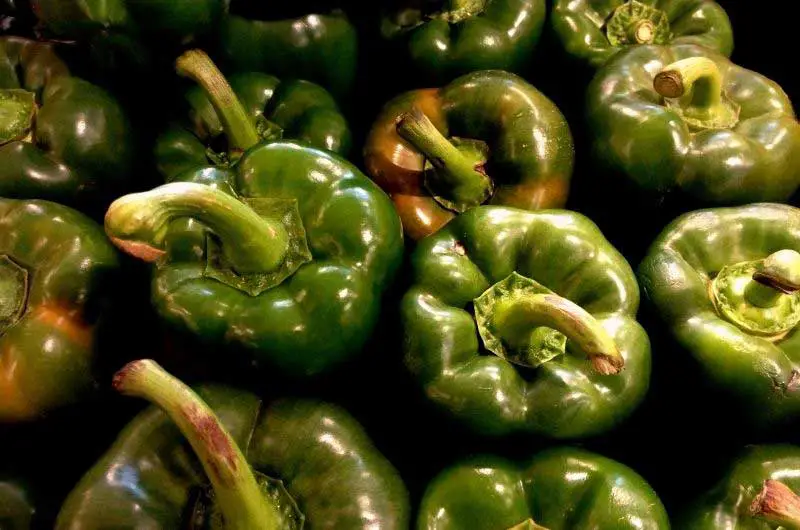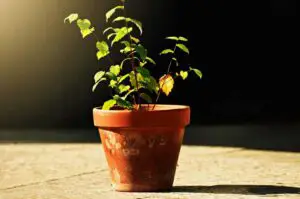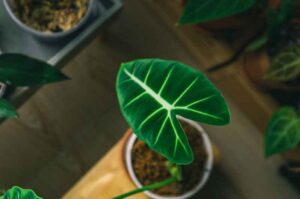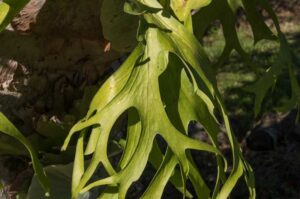Why Are My Green Peppers Turning Black? (Answered)
During the ripening phase, peppers can naturally turn black or dark purple. When exposed to excessive sunshine or freezing conditions, the skin can also become black. Some pepper cultivars, such as jalapenos and some bell peppers, are more prone to developing this dark purple or black colouring.
Black colouring is typical and should not be a reason for concern unless you begin to notice tiny black specks or that your peppers end up becoming black and mushy, which may indicate illness or blossom end rot.
Continue reading this article to find out more about why your green peppers are turning black.

Does My Pepper Have A Disease Because It Turned Black?
In the majority of cases, no. It’s a natural process in peppers, and it’s more prevalent in some types. Peppers that seem healthy on the surface but have partially purple or black skin are safe to eat and will not affect the flavour. If you notice small black spots on your peppers or if they get limp and black, this is a sign of a problem.
What Causes Peppers To Turn Black And Purple?
Here are a few causes, that might cause your peppers to turn black.
The Natural Ripening Process
When specific pepper mature, they naturally become purple. These peppers typically start green, then turn purple before becoming a yellowish or red colour.
When the purple and red pigments in the skin mix, some bell peppers create a dark purple colour while turning red, which appears black when the purple and red pigments are combined.
By nature, several pepper varieties have both black and dark purple fruit and leaves.
Cold Temperatures
Cold temperatures can cause the same purple discolouration. Some kinds, like jalapenos, are particularly prone to this. As I write this in early autumn, I have a plethora of healthy jalapeño peppers that have turned purple over the last month.
This usually is not a cause for concern, but peppers are still frost delicate. Furthermore, if temperatures remain continuously below 46°F (7.7°C), your pepper fruits will suffer.
High Sun Exposure
When exposed to too much UV radiation, sure peppers get a purple “suntan.” This is the pepper’s inherent UV radiation defence. It is usual for the leaves to have some purple striping. I occasionally see this in indoor peppers growing under high-intensity grow lights.
Sun exposure is not a concern until your peppers develop bleached dry areas caused by too much intense sunlight. These dry areas are known as sunscald.
Disease
Blackening peppers can also be a sign of a variety of plant diseases that peppers are susceptible to. Blossom end rot, for example, generates withering black areas that grow over time on peppers. A calcium deficiency in the plant most usually causes this.
While blossom end rot cannot be reversed, you may keep it from happening on other peppers by watering them on a regular basis. Adding a smashed-up calcium tablet to your water will also assist the pepper plant get a fast calcium boost, preventing blossom end rot.
Anthracnose is another disease known for generating black patches on peppers. Anthracnose causes black lesions on the surface of peppers and on the pepper plant’s leaves and stems. Anthracnose can destroy your pepper plant if left unchecked.
If your pepper plants start to show signs of anthracnose, prune and dispose of the affected parts. Following that, spray the pepper plants with a copper fungicide to eliminate any remaining illness on the plant. To prevent anthracnose from recurring, maintain the soil well-drained and avoid watering your peppers from above. Damp leaves provide an ideal habitat for anthracnose to grow.
If Your Peppers Are Still Black:
Maybe your peppers haven’t been exposed to the cold, don’t have any nutrient deficits, and don’t exhibit any signs of changing colour, yet they’re still black. What does this imply? If nothing else, this suggests that your peppers are naturally black. Some pepper plant kinds are known to produce black peppers.
Despite their enigmatic hue, colour has no bearing on how spicy they are. Some black peppers are pretty fiery, while others are relatively moderate.
Some popular black pepper kinds are Black Cobra Peppers, Black Hungarian Peppers, Black Pearl Peppers, Chilaca and Black Pearl Peppers.
When Do Peppers Turning Black Become A Problem?
It is not natural for your peppers to develop small black specks or to turn mushy and black. Tiny, soft, black specks can indicate a bacterial spot infection or decaying peppers due to insect attacks. If you observe your peppers getting dark and squishy at the bottom tip, this is a sure symptom of blossom end rot.
Blossom end rot is caused by a calcium shortage, which is necessary for fruit development. In contrast, most gardens have acceptable calcium levels. The majority of blossom end rot cases are caused by inconsistent watering and your pepper plant’s constant wilting from thirst.
Because dried-out soil prevents roots from absorbing calcium, the plant is unable to transport calcium to growing peppers, resulting in blossom end rot.
If you have soft black patches or blossom end rot on a pepper, you should remove it so the plant may focus on growing more healthy peppers. Blossom end rot peppers can be eaten if the bottom half of the pepper is removed and discarded, but always check inside to see whether it has started to rot further up inside the pepper.
What Is Causing My Peppers To Turn Purple?
Purple peppers may just be a stage in the ripening process. In this situation, peppers will begin green, then become dark purple, and eventually red. Furthermore, certain kinds, such as the purple beauty pepper, have a natural purple tint.
Conclusion
A lot of factors might cause peppers to become black. While the ripening process most usually causes blackening peppers, they can also indicate illness, a lack of nutrients, lower temperatures, or simply being naturally black.
Unless affected by illness, black peppers can be consumed in the same way as any other pepper; the black colour does not influence the flavour. Hopefully, you’ve figured out why your peppers are becoming black.






